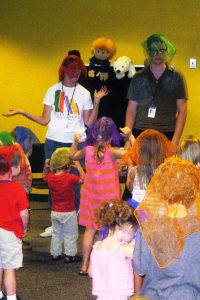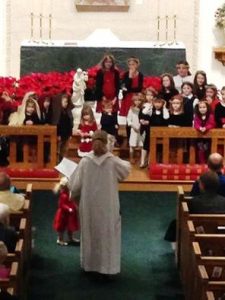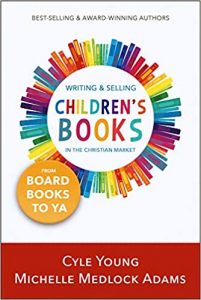“Then I’ll huff, and I’ll puff, and I’ll blow your house down!” said the Big Bad Wolf.

Children engage with picture books by hearing the words we read aloud (auditory or hearing) and seeing the pictures we show them (visual or sight). Another sensory opportunity often overlooked is touch/action, often called kinesthetic. That’s why generations of children know exactly how to blow down pig’s houses!
How can we add that kinesthetic dimensions to Christian picture books?
Level 1: Read the story. (all ages)
The majority of books require no engagement other than looking at the pictures and no interaction with the reader other than sitting still to listen.
Level 2: Touch-and Feel (birth-5 years)
Very simple board books may feature items attached to the page or holes cut to reveal textures. Feel the woolly coat. The adult guides the very young child’s hand to experience sensations perhaps for the first time.
Level 3: Lift the Flap (6 months to 3 years)
The next level of interacting involves lifting a separate piece of the book to reveal part of the story itself. What’s behind the bush? The child and adult physically engage in lifting a flap and determine how the figure under the flap relates to the story line.

Level 4: Engage in the text (6 months to 6 years).
The child is invited to make a noise or motion in response to the story. Touch fingertips together for a mountain. These very simple motions bring the child into the words of the story, increasing engagement between reader and listener.
Level 5: American Sign Language (3-8 years)
A much more significant level of interaction is in using American Sign Language to replace certain words in the text, child actually tells the story with the reader. LOVE The sign for love is to cross your arms over your chest. The child is assists in actually telling the story and often the signs afterwards are enough to remind the listener of the event or concept.
Level 6: Retelling (5-12 years)
Beyond the book methods require children old enough to remember without needing to see the pictures. Let’s have three volunteers to be Elijah, the wind and the broom tree. Directions in the book guide reader and listener to act out all or part of the story or tell it in their own words to others.

Level 7: Creative Expression (6-12 years)
Creative expression expands the story experience in drawing, building, or work with craft materials. Draw a mural of creation. These activities can be done by any number of children in a home or Sunday school setting.
Which one to use in the story you are writing? In general, the younger the child, the simpler the language and more immediate the response has to be. But any story for any age can be more memorable with invitations to kinesthetic response.
Start moving!

This post is an excerpt from Robin’s chapter in Writing & Selling Children’s Books in the Christian Market: From Board Books to YA by Michelle Medlock Adams and Cyle Young, Iron Stream Media, 2020.
PICTURE 5

Award winning author Robin Currie led children’s departments of Midwestern public libraries before being called midlife to ordained ministry. She has a special love for children’s literacy and Bible storytelling. She serves in Chicago area parishes and annually volunteers teaching English in developing countries. She and her husband actively grandparent 5 wonderful kids!
Robin has published seven library resource collections of creative ideas for library story times, and more than 20 Bible story books for children.
She is excited to reveal the cover of her next book, How to Dress a Dinosaur, coming in March 2022!




1 Comment
So much great information shared here! Thanks for this teaching. 😊